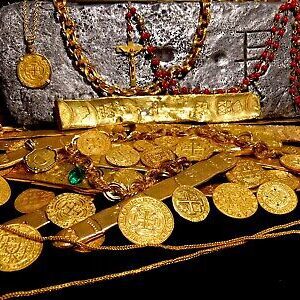King Thutmose IV, having met an untimely demise, found his resting place in the illustrious Valley of the Kings. Subsequently, his mummy was relocated to the Deir el-Bahari Cache (DB320), joining other regal mummies. Despite the rewrapping of his body in its original bandages, with the feet deliberately detached but not lost, the mummy of Thutmose IV was unearthed within the KV35 mummy cache in 1898 by Victor Loret. In ancient times, priests had shifted the king’s remains for safeguarding. Originally, the monarch was interred in his designated tomb (KV43), a discovery made by Howard Carter in 1903.
Mummy of King Thutmose IV
Following the examination of the king’s body by Grafton Elliot Smith (1871-1937), it was deduced that Thutmose IV was in a state of severe illness at the time of his demise, having seemingly endured the ailment for an extended period. Elliot Smith sadly described Thutmose IV as ‘extremely emaciated.’
The king, displaying signs of balding, became distinguished as the first of his time to have pierced ears, and his fingernails were meticulously manicured. In death, the mummy’s hands were crossed over his chest in the Osirian position.
A scrutiny of his mummy conducted by Grafton Elliot Smith revealed his extreme emaciation at the time of death. Although his height was recorded as 1.646 m (5 ft 4.8 in), considering the post-mortem breakage of the feet, his stature in life would have been taller.
The forearms are crossed over the chest, right over left. His hair, parted in the middle, measures about 16 cm (6.3 in) in length and is of a dark reddish-brown hue. Additionally, his ears are pierced. Elliot Smith estimated his age to be 25–28 years or possibly older.
Several decades later, in 2012, Imperial College London examined the late king’s body. Alongside knowledge of some of Thutmose’s family members dying young, such as his great-grandson Tutankhamun and his two stillborn daughters, the examining surgeon theorized that Thutmose and other family members might have possibly suffered from Temporal lobe epilepsy.
Mummy of King Thutmose IV
Some scholars propose that the king’s famous Dream Stele, where he describes the Sphinx of Giza talking to him, could be explained by the experiences of those with Temporal lobe epilepsy, who often suffer from visions.
This idea, however, remains a theory at present and is not an ultimate conclusion. It must be noted that the reason for the Dream Stele could have been propagandist or simply Thutmose certifying his status as a divine ruler, similar to Hatshepsut’s writing about her divine birth at Deir el-Bahari. Alternatively, it could be something the king genuinely believed occurred to him, without the modern idea that he had an illness causing such a thing.
The king’s body measures at 1.64m (5 ft 4.8 in), but due to his disembodied feet, he was likely taller in life. He was relatively young, with Smith estimating his age at death to be approximately 28, although more modern scholars suggest mid-30s, perhaps. He has both ears pierced, and there appears to be a smile with teeth showing. Most notable is his hair, entirely natural, long, and parted in the middle, with a reddish-brown color.
New Kingdom, 18th Dynasty, reign of Thutmose IV, circa 1401-1391 BCE. Now in the National Museum of Egyptian Civilization, Cairo. JE 34559





